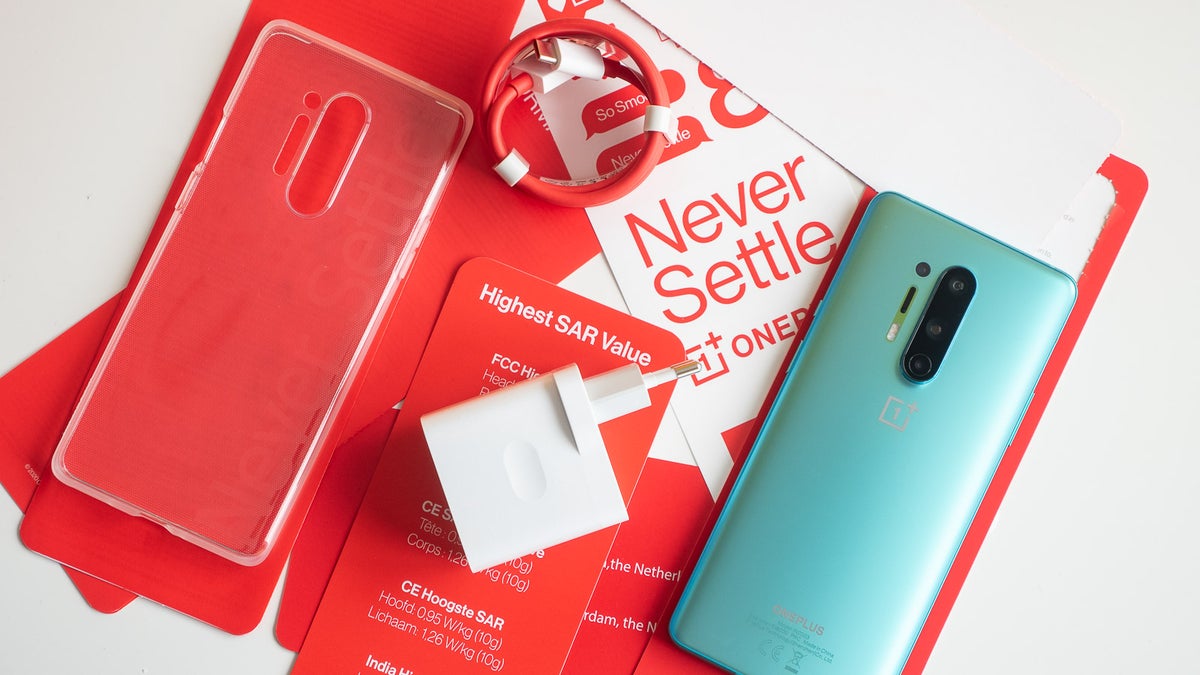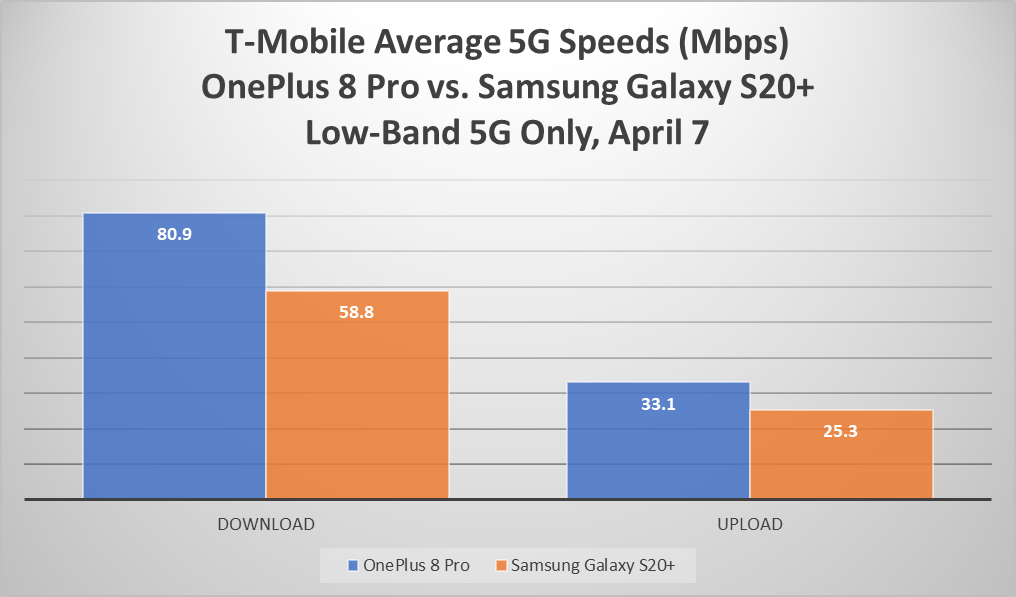Here's why OnePlus 8 Pro costs a grand, and its 5G speeds on T-Mobile beat Samsung

In a somewhat surprising move. T-Mobile chose one of its OnePlus portfolio phones to test its standalone 5G network, and establish a number of milestones, like the first data, call and video session over its dedicated 5G network.
We say surprising, as Samsung's high-end phones have been cornering the 5G phones market in the US for a good year now, carrying the lion's market share. The choice of OnePlus is a significant PR win for the phone maker, and bodes well for its 5G strategy going forward.
Said strategy has now been discussed in depth by the OnePlus CEO Pete Lau who sat for an interview with PCMag's Sascha Segan, and divulged a number of insider revelations about the company's 5G plans in the future.
T-Mobile's 5G network is best served by OnePlus phones
The reason that T-Mobile went with OnePlus for testing its first standalone 5G efforts, is that the maker has thoroughly optimised its phones for its current next-gen network that still has to ping its 4G LTE equipment for the initial connection. So much so that on T-Mobile's ubiquitous 5G low-band network, it's the OnePlus 8 Pro that consistently notched higher average speeds than the Galaxy S20+.

OnePlus 8 Pro vs Galaxy S20+ average 5G speeds on T-Mobile
How come? Well, Samsung is second only to Huawei in the number of 5G-related patent holdings, but OnePlus, which is part of the phone-making juggernaut BBK that also includes the Oppo and Vivo brands, has been investing in targeted 5G research in its own labs for a while now, says Mr Lau:
We began our 5G R&D in 2016, and have invested almost $30 million to scale up and upgrade our 5G labs in both Shenzhen and Taipei since 2018. Our 5G labs possess industry-leading equipment to support both hardware and software R&D, from radio frequency (RF) circuits, antennas, and multi-media (camera, audio, and display), to software research for communication protocol, throughput optimization, performance, power, stability and user scenario testing.
All that investment is now beginning to pay off, and standalone (SA) 5G connections can be unlocked via OTA updates on this season's OnePlus phones, advised Mr Lau, whenever the carriers are ready with their SA networks. "SA can come with a firmware update on existing handsets if the handsets are equipped with the X55 modem," he said, while on AT&T, for instance, users will have to wait for next year's Snapdragon 875 and its X60 modem to take advantage of Ma Bell's eventual SA 5G network.
In addition, OnePlus is preparing to optimize its phones for the eventual fast mmWave 5G network of T-Mobile as well, just like it did with the Verizon-exclusive OnePlus 8 5G UW. "We will continue pushing the technology forward with partners, like T-Mobile, Verizon, and Qualcomm, bringing multi-band devices to our users," advised the OnePlus VP of R&D Kinder Liu.
5G made OnePlus phones more expensive
The OnePlus 8 Pro is the first company phone that hit the $999 mark, and with a good reason. While still cheaper than similar handsets from Samsung, some balk at that rise, considering that OnePlus was for many years the underdog and value-for-money champ.
With the advent of 120Hz displays, multiple cameras, and 5G mmWave connectivity, a grand for such a phone is seemingly becoming the norm this year, and the OnePlus 8 Pro is no exception.
A major challenge is squeezing a large number of necessary hardware components into a small, compact space. 5G is much more demanding in terms of power consumption compared to 4G (approximately 100 ~ 300mA). This brings about higher temperatures within a device that must be addressed accordingly to avoid thermal issues...
Given that we are well on our way to the $1500 phone at the top end, we can't wait for that prophecy to become fulfilled, but it's probably not happening until next year at the earliest. In the meantime, you can grab one of the $700-$800 5G warriors with an integrated 5G chipset like the OnePlus 8, or the Motorola Edge and LG Velvet when they become available.
Follow us on Google News




![Some T-Mobile users might be paying more starting in March [UPDATED]](https://m-cdn.phonearena.com/images/article/176781-wide-two_350/Some-T-Mobile-users-might-be-paying-more-starting-in-March-UPDATED.webp)









Things that are NOT allowed:
To help keep our community safe and free from spam, we apply temporary limits to newly created accounts: